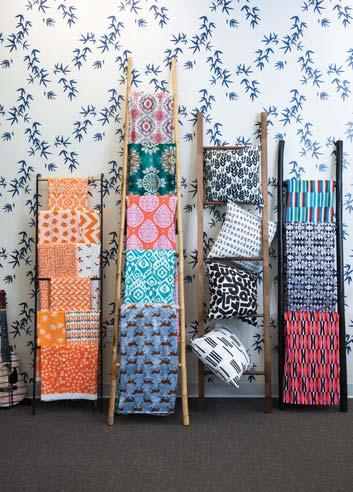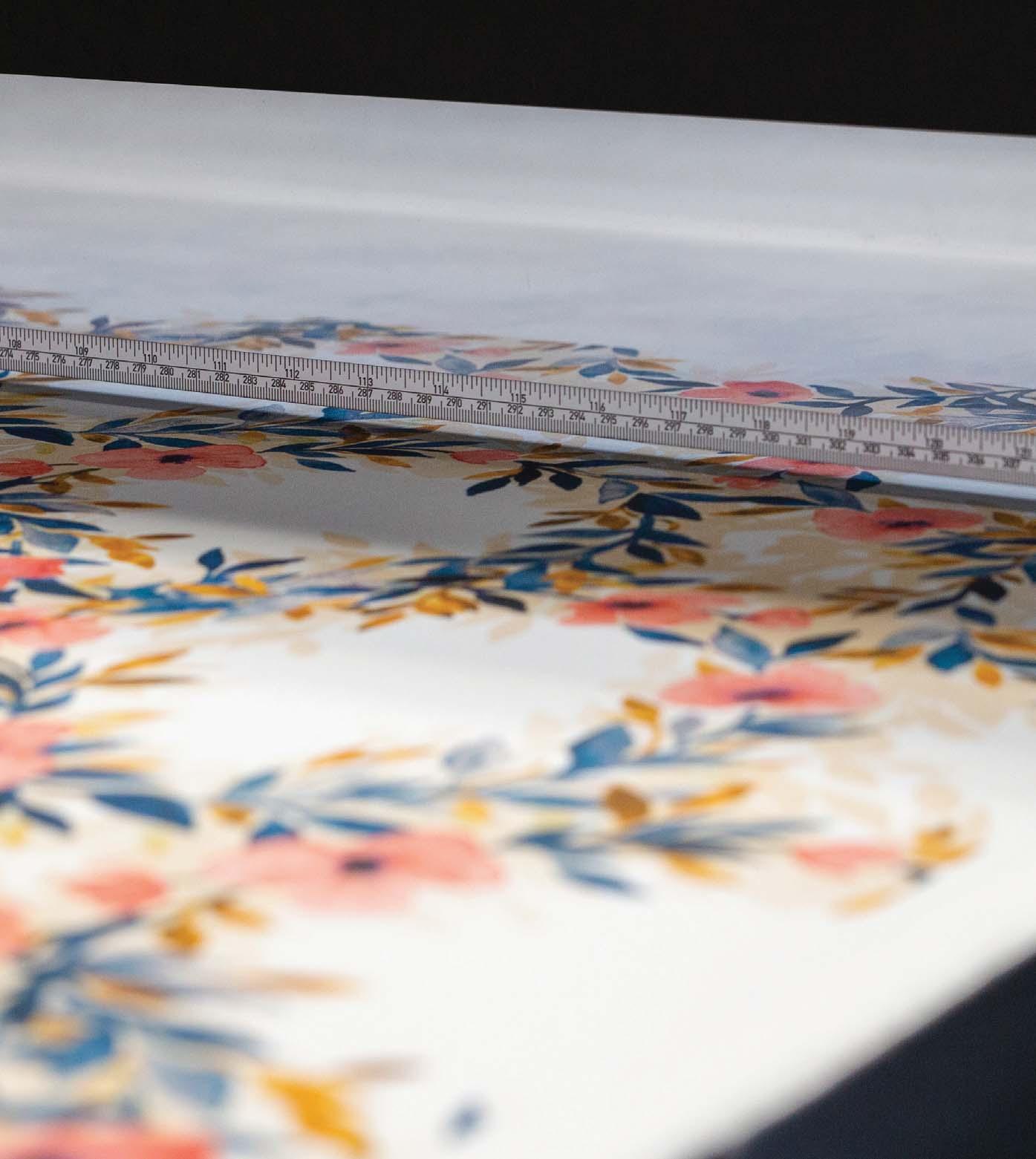
4 minute read
PRINTING PATTERNS
A floral fabric comes off a large-format printer inside Spoonflower’s Durham-based factory.
Durham-based textile company Spoonflower puts tech into textiles
Advertisement
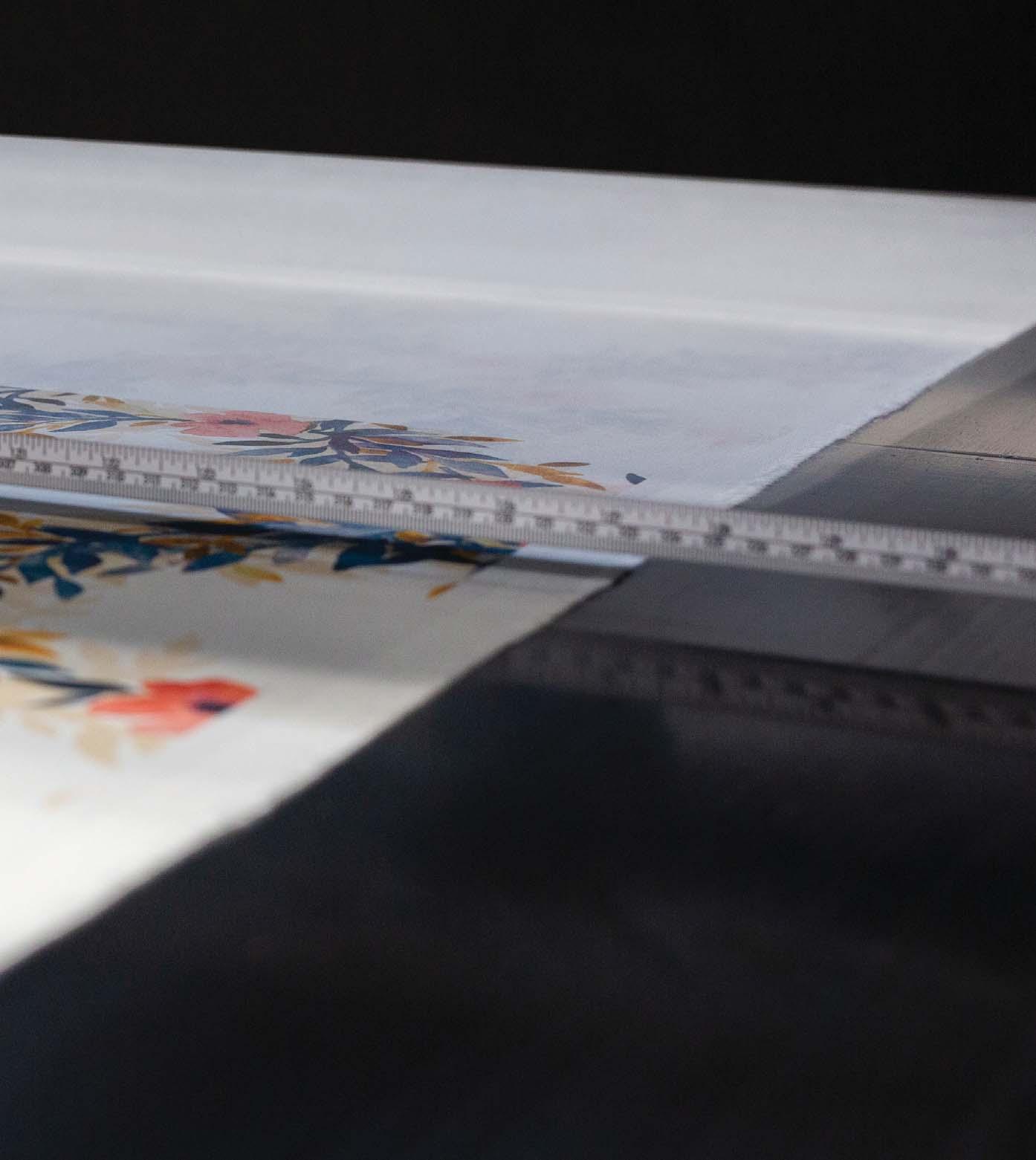
PRINTING PATTERNS
by AYN-MONIQUE KLAHRE photography by TAYLOR MCDONALD
Tucked inside a somewhat sleepy office park in Durham is a surprise: a hive of color, pattern and creative energy, a textile manufacturer with a tech-first ethos. It’s the world headquarters for Spoonflower, a company known for its print-on-demand fabrics. Here, a sprawling factory floor hums with behemoth machines, staffers perch in lofty offices and racks of fabric are bundled up, ready to head out the door. The Spoonflower origin story: In 2008, Stephen Fraser’s wife was looking for the perfect polka dot fabric to make a pair of drapes. Surely, he thought, you can get it printed somewhere—after all, you could get your photo printed on a mug. But you couldn’t; the few custom print options demanded either huge quanities or high prices. So Fraser teamed up with Gart Davis; they’d worked together at a print-ondemand book company. Together, they hacked a large-format printer to work with fabric—and Spoonflower was born. “The first years were about providing crafty people with a way to create their own unique fabric,” says company president Allison Polish, who joined the team as a partner and owner in 2013. Through the site, anyone could upload their own design and get fabric made. It’s a customer-responsive and technology-driven company, and they’ve adjusted along the way. For example: They quickly found that graphic designers didn’t just want to print their own fabric for their own purposes, they wanted to sell it—so they created the Marketplace. With the rise of Etsy, they found that “momtrepreneurs” were using Spoonflower as part of the supply chain for their own brands. “There is this whole group of entrepreneurs making unique, special things to sell,” says Polish. Today, Spoonflower also offers printon-demand wallpaper and finished home goods, like bed and table linens. They’ve opened up a factory in Berlin to serve a growing international base. And in February, they brought in a new CEO, Michael Jones, who comes with a background in web retail. Despite its growing and global reach, the brand feels strong ties to North Carolina, and to the Triangle in particular. “We’re proud to be part of a rich textile state,” says Polish, citing the textile programs at N.C. State and Meredith, as well as nearby Cotton Incorporated and [TC]2 as creative feeders to its efforts. “We love that we’re bringing this tradition back to the state.” The company frequently hosts local makers in their studio space for sewing lessons, design workshops and charity meetups. “Part of our ability to exist is that the Triangle has this amazing convergence of new and old, of technology but also the history with textiles,” says Senior Vice President of marketing Sarah Ward. “Spoonflower is be here because innovation brings these textiles to life.”
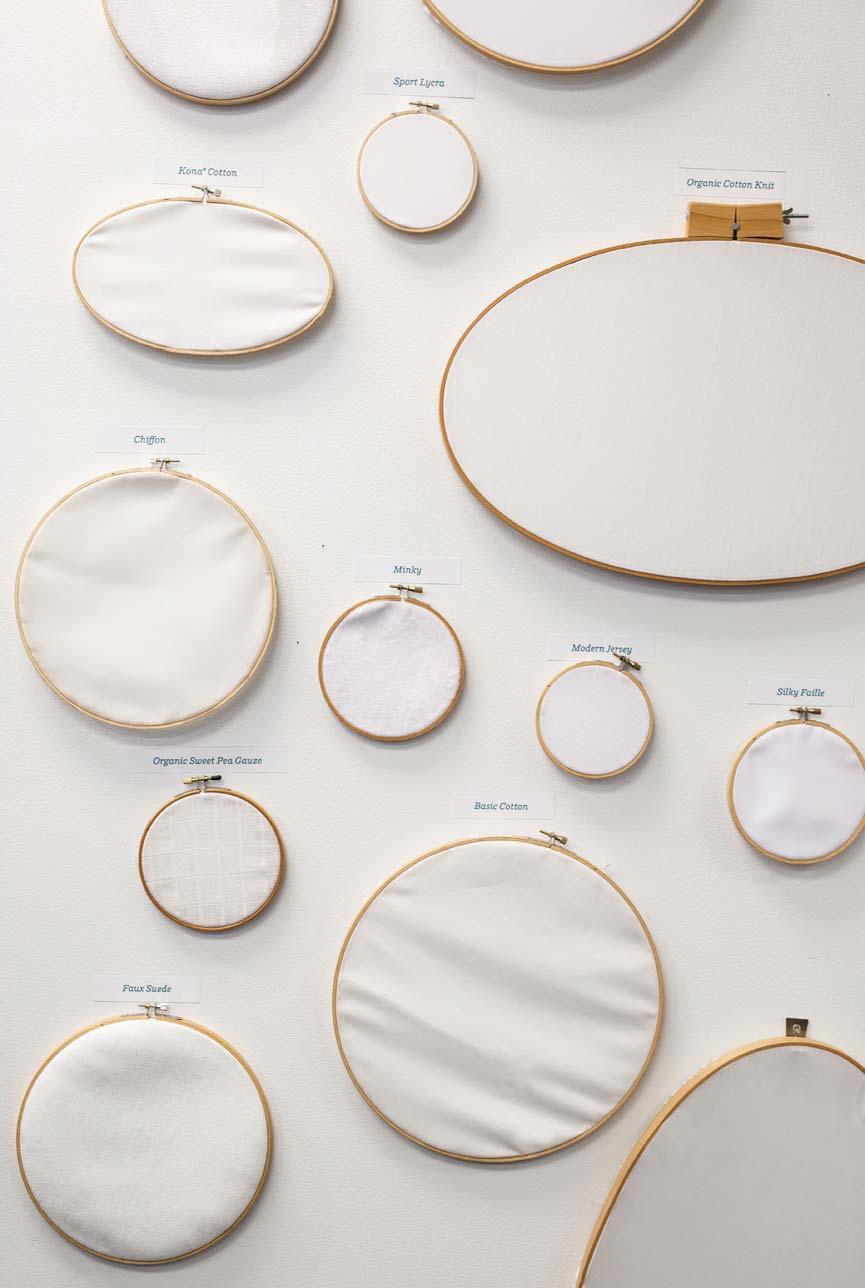
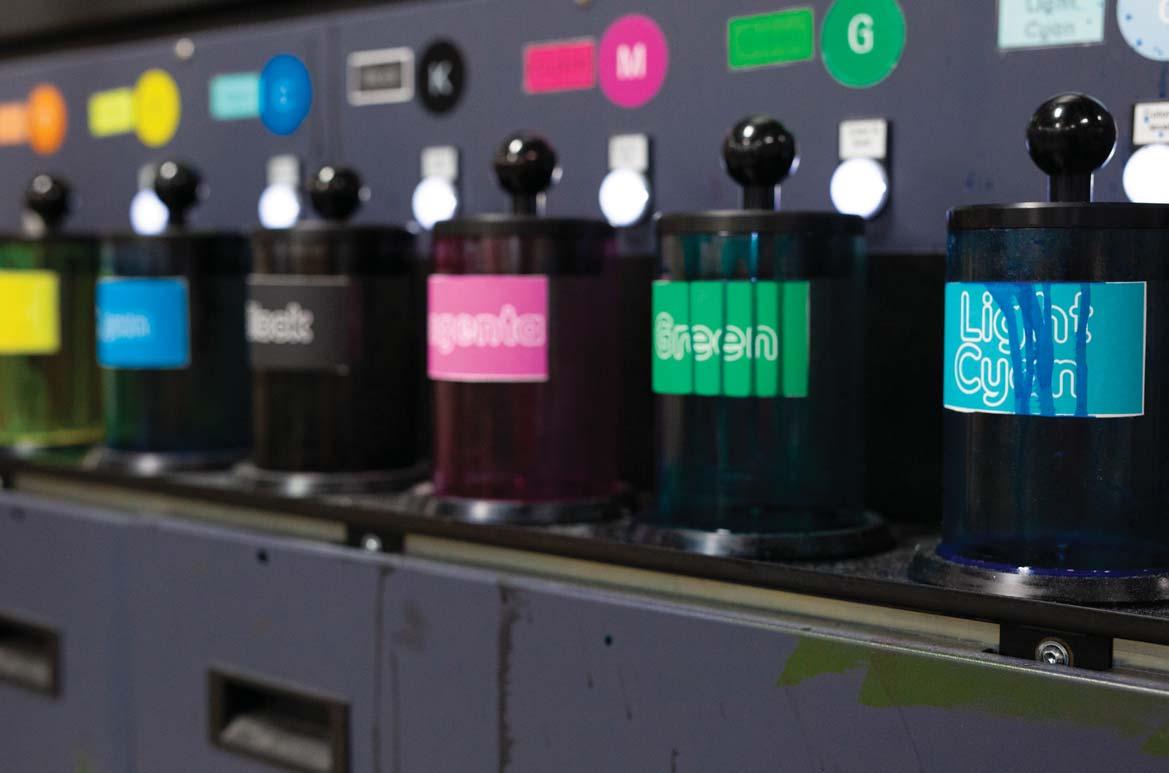
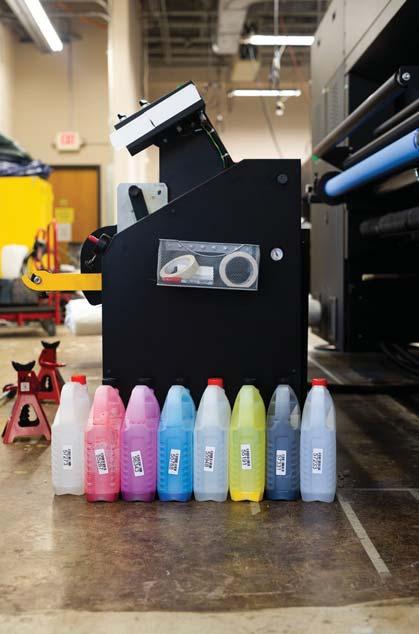
Spoonflower uses pigment inks to print on its natural fabric printers, as well as a fixation solution to help maintain colorfastness. Clockwise from top: Ink containers from a grand format printer, color check swatches to show the accuracy of color relative to the fabric type, ink refills for a large format printer. Opposite page: A few of Spoonflower’s available fabric options.
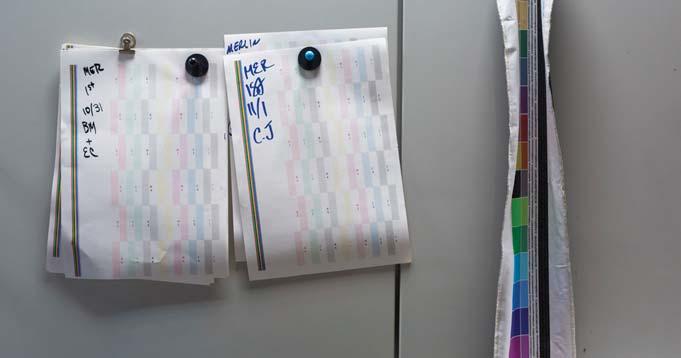
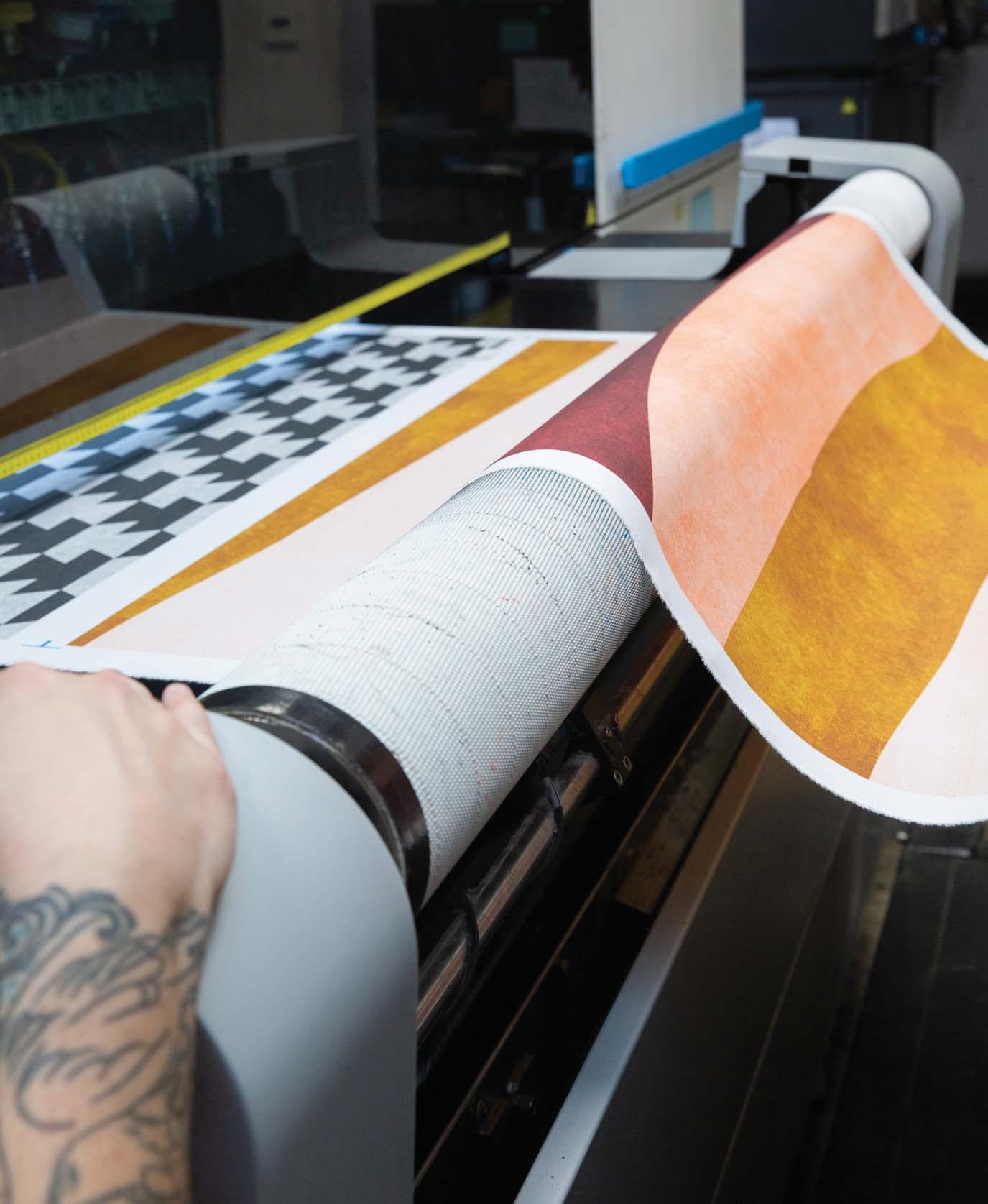
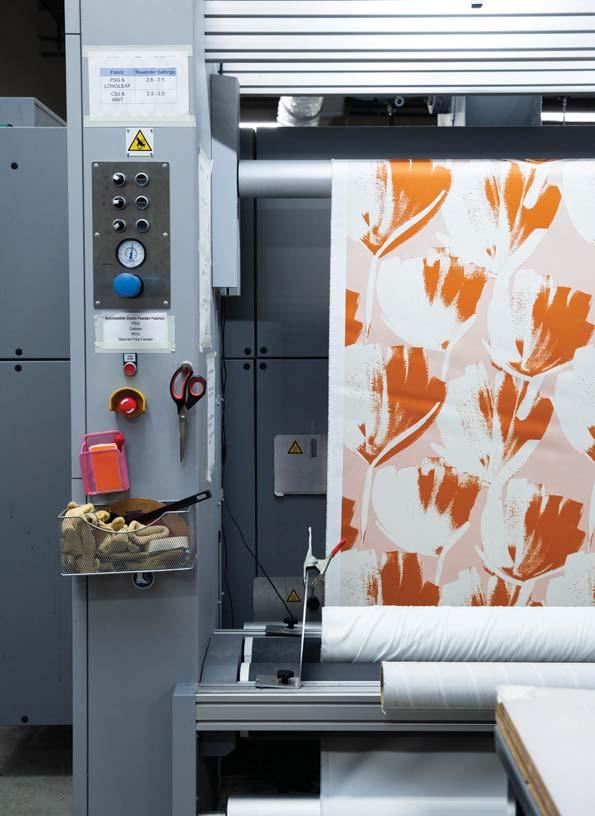
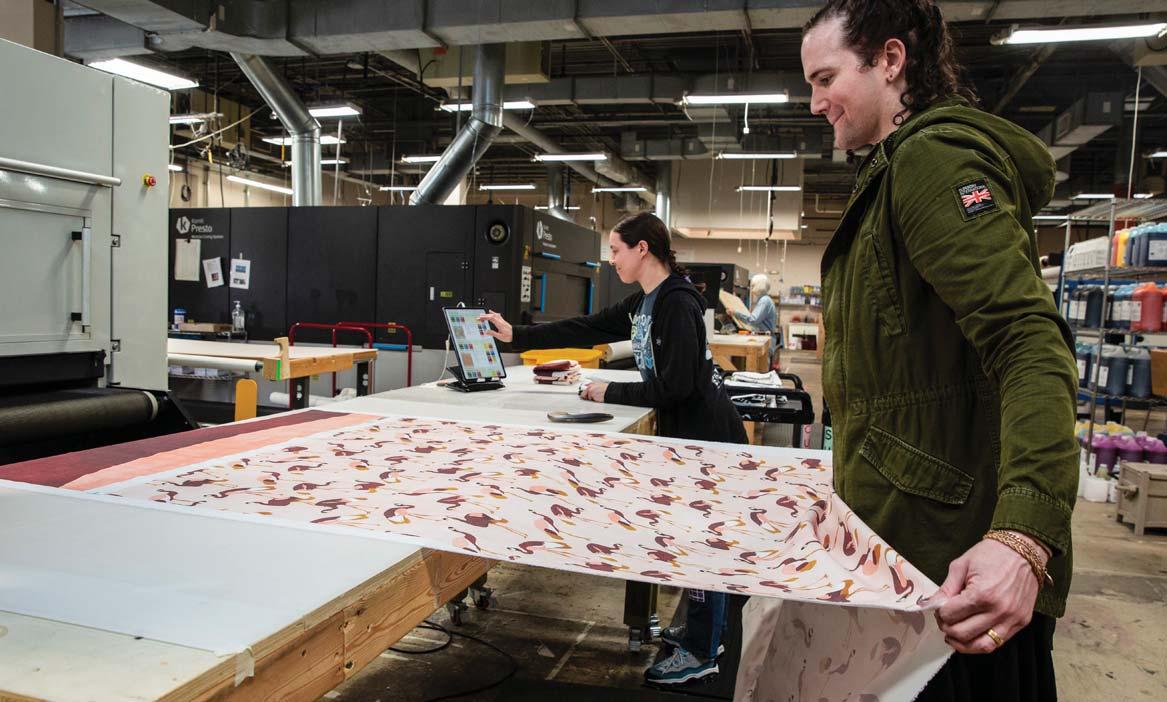
Opposite page: Just-printed fabric comes out of a large format printer. This page, clockwise from top: Operations specialist Roo Popio smooths fabric after it exits the machine’s integrated dryer; it will immediately be cut to the customer’s specifications. In the background, operations specialist Kimmi Kresica programs patterns. Cut, dried and folded fabric. Material for bedding exits a grand format printer.
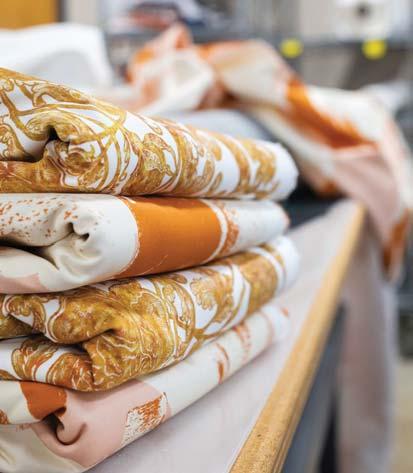
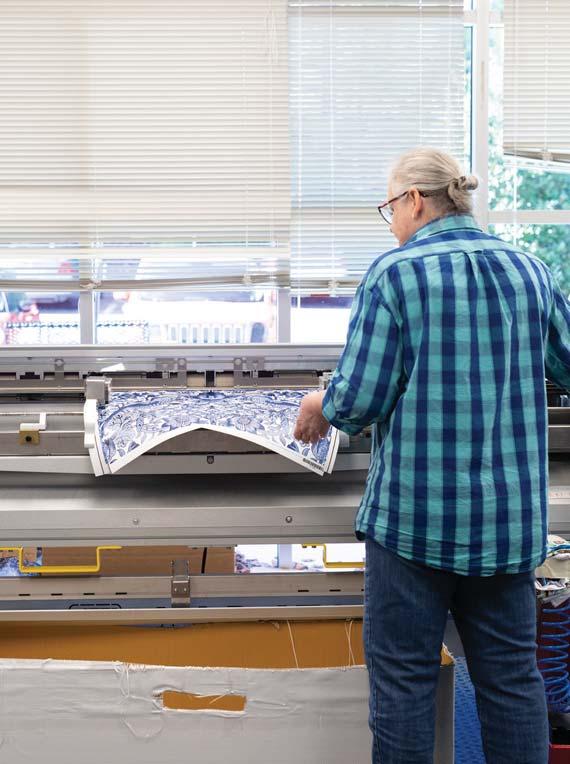
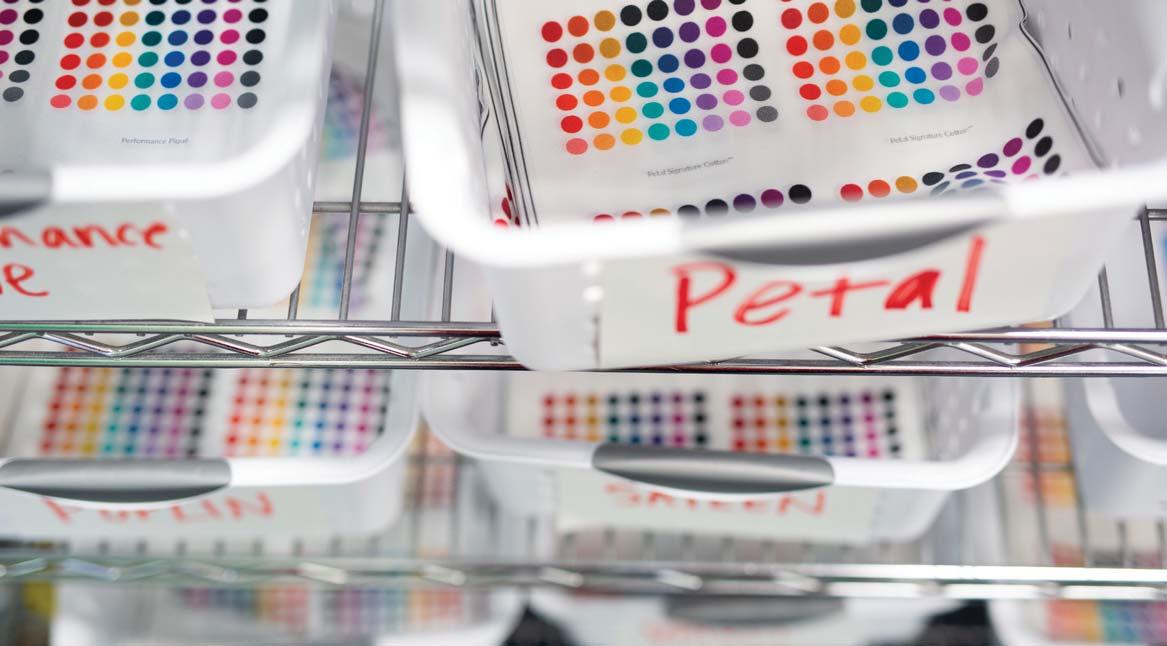
This page, clockwise from above: Bins of swatches that show how the color will look on various materials. Operations specialist Dee Anne Burnett uses a cutting machine to prepare a wallpaper order (it’s printed on a different machine, just for printing paper). Each of the sewing machines used for creating the home goods is named after a notable woman. Opposite page: Wallpaper samples; they offer three kinds of wallpaper.
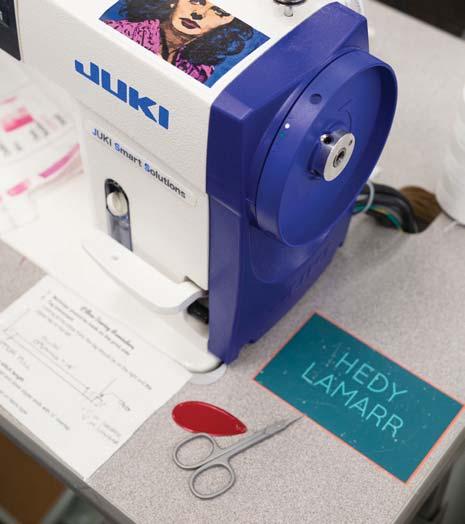
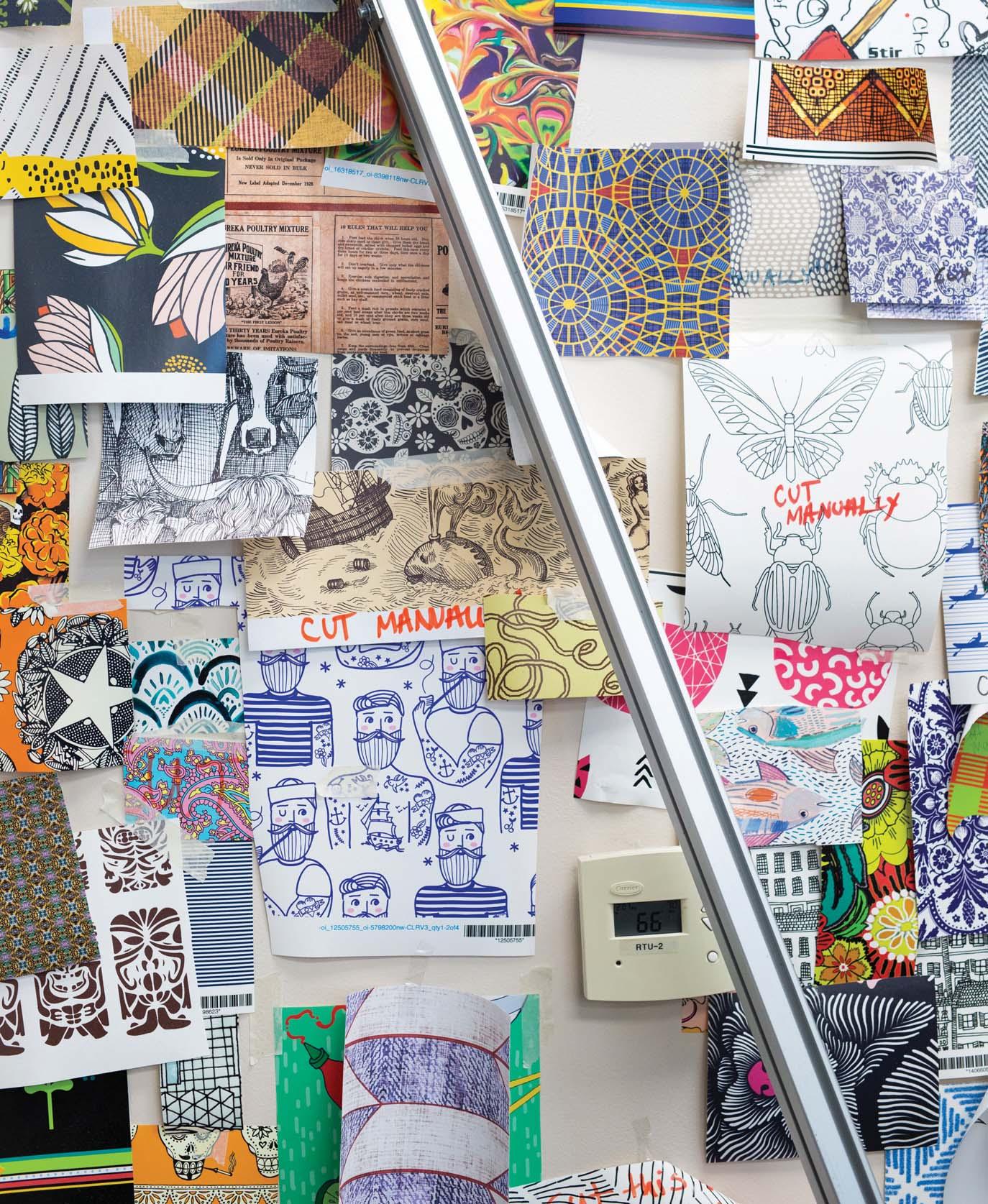
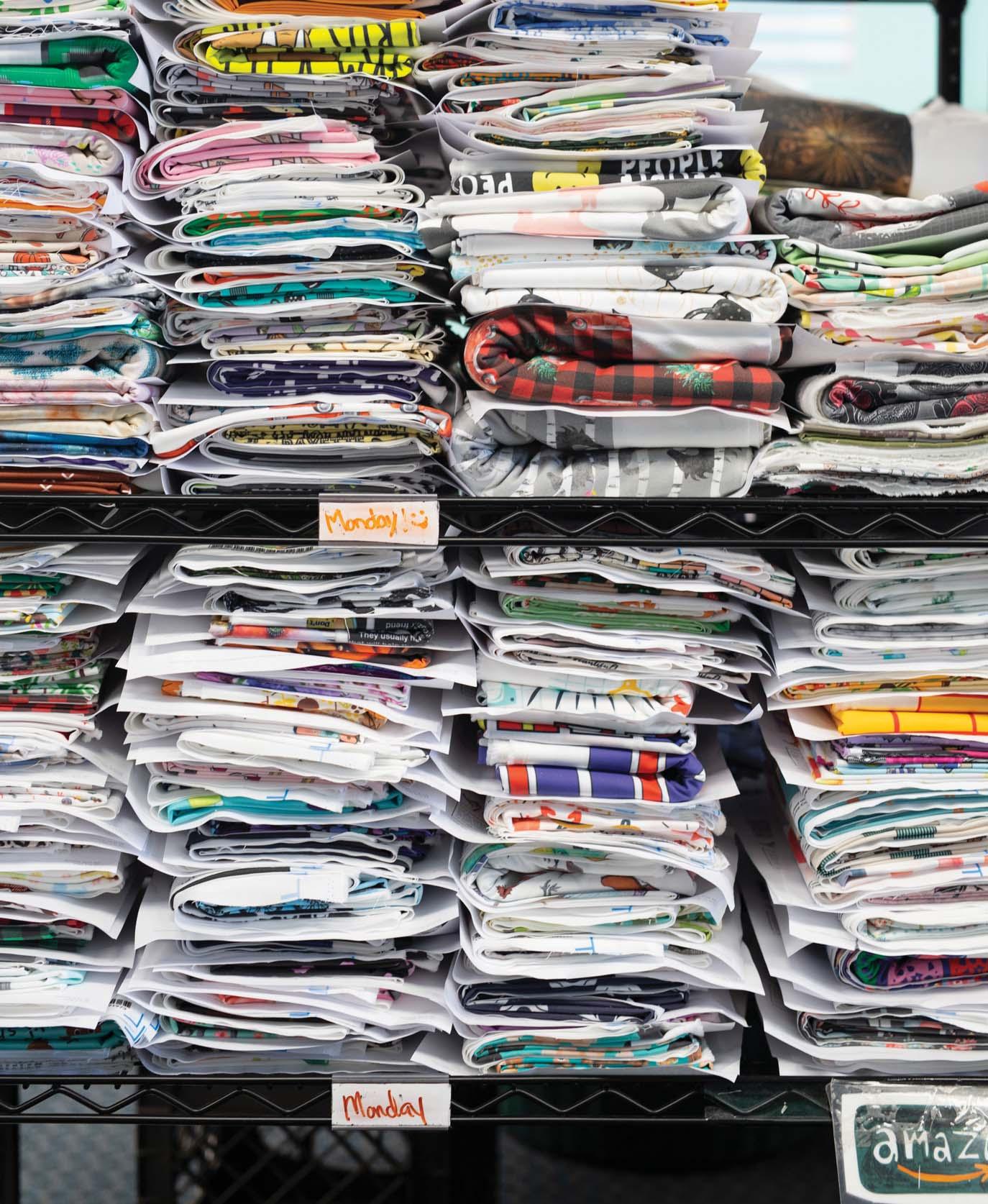
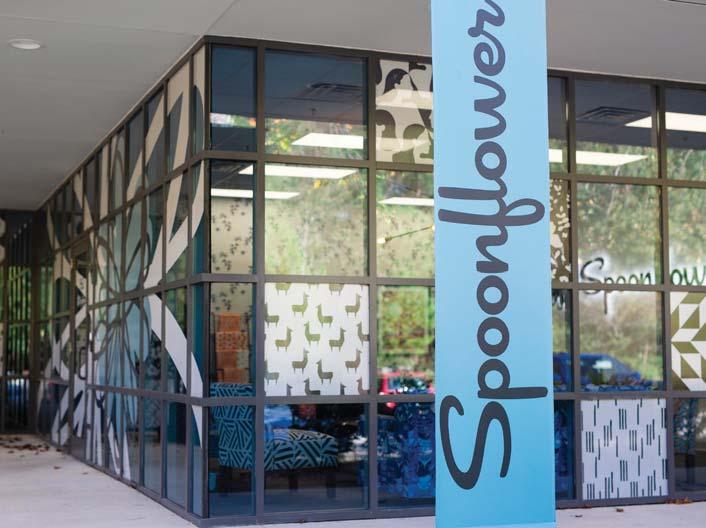
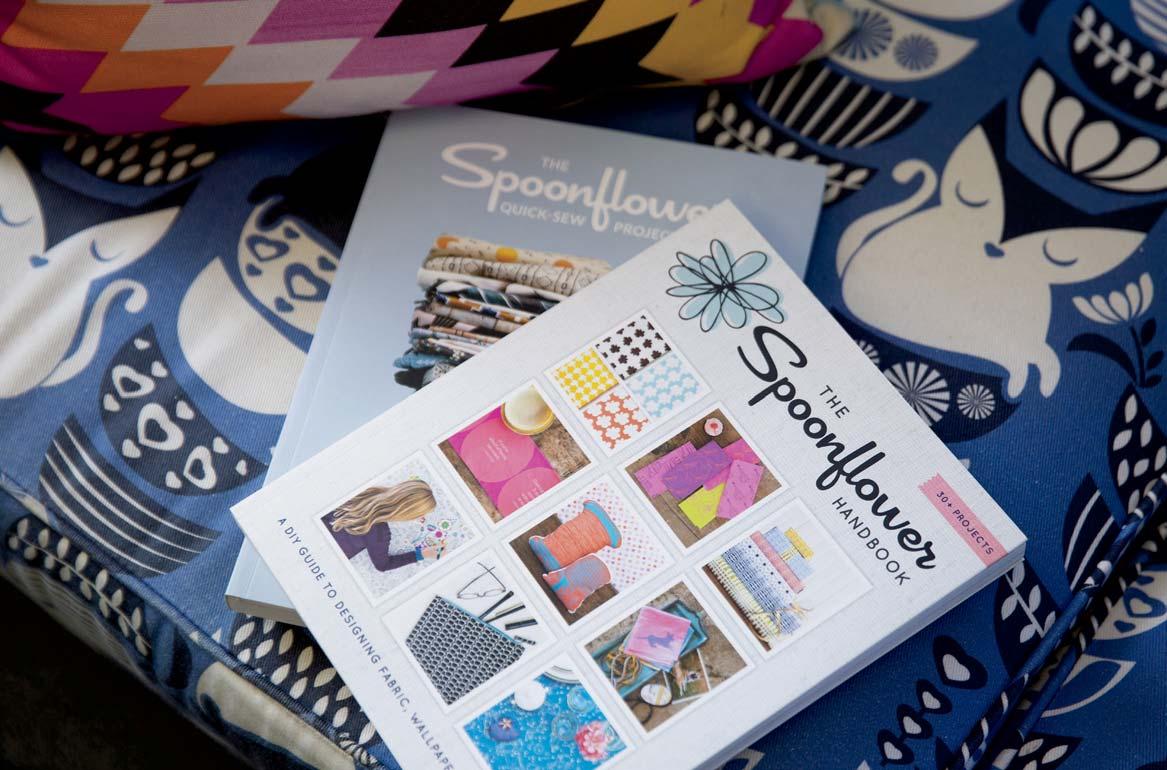
Opposite page: Stacks of fabric with packing slides in between them, ready to ship. “In a typical week, Spoonflower will print more than 40,000 unique pieces of fabric or wall media between our two factories,” says Gart Davis. This page, clockwise from top: Crafting books from the Spoonflower team, on a bench upholstered in their fabric. Samples in the lobby. The exterior of the office.
